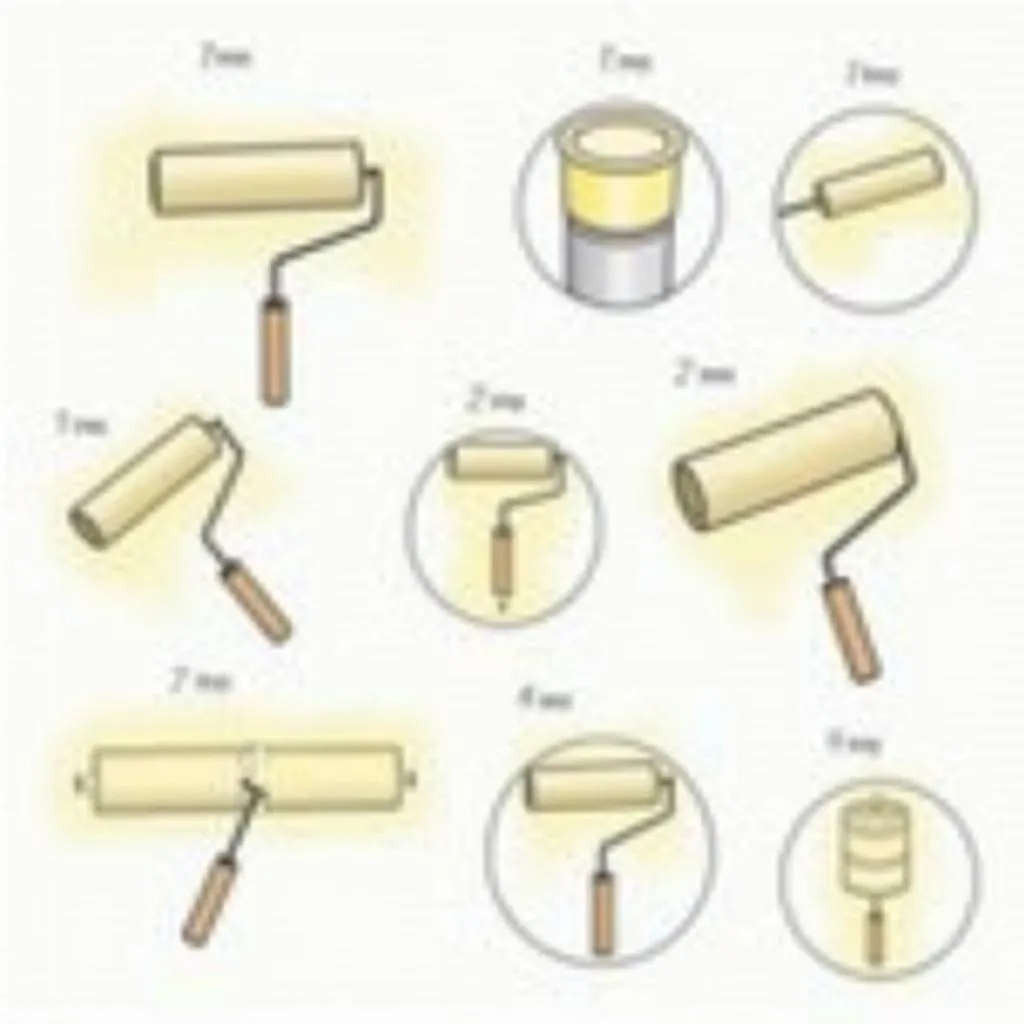Color banding, also known as color striping, is a frustrating visual defect that can appear on painted surfaces, especially in areas with subtle color gradients. It manifests as distinct bands or stripes of slightly varying colors, disrupting the smooth transition you expect from a flawless paint job. Imagine painting your living room a calming sky blue only to step back and see noticeable streaks of lighter and darker shades, marring the intended serene ambiance. That, my friends, is the unfortunate reality of color banding.
What Causes Color Banding in Paint?
Several factors can contribute to this painting predicament, and understanding them can help you prevent it from ruining your next decorating endeavor.
- Improper Paint Application: Uneven paint application is a prime culprit. If you roll on paint too quickly, use inconsistent pressure, or fail to maintain a wet edge, you risk creating areas of uneven paint thickness, leading to visible banding.
- Poor Quality Paint: Not all paints are created equal. Low-quality paints with poor pigment distribution or inadequate hiding power are more susceptible to color banding. Think of it like this, investing in premium paint is like investing in a good tailor – the end result will be far more polished and satisfying.
- Environmental Factors: Environmental conditions during painting or drying can also play a role. High humidity, for example, can cause the paint to dry too quickly, increasing the likelihood of banding.
- Inadequate Surface Preparation: A smooth, well-prepared surface is crucial for achieving a uniform paint finish. If the surface is rough, porous, or has patches of old paint, it can lead to uneven paint absorption and subsequently, color banding.
 Color banding on a wall
Color banding on a wall
How to Avoid Color Banding
The good news is that color banding is often preventable with the right knowledge and techniques. Here’s how to banish banding and ensure a smooth, consistent finish for your painting projects.
1. Start with Proper Surface Preparation
Thorough surface preparation is non-negotiable. It’s the foundation of a flawless paint job. Start by cleaning the surface with a mild detergent to remove dirt, grime, and loose paint. Repair any imperfections such as cracks or holes with patching compound and sand smooth. Finally, apply a primer specifically designed for your surface type to create a uniform base for the paint to adhere to.
2. Invest in High-Quality Paint
The quality of your paint directly impacts your final result. Opting for a high-quality paint from a reputable brand like Color Box Hanoi ensures better pigment distribution and hiding power, minimizing the risk of banding. Remember, quality paint is worth the investment for a beautiful, long-lasting finish.
3. Master the Art of Even Application
Consistent paint application is key. Use a high-quality roller with the appropriate nap length for your surface and load it evenly with paint. Apply the paint in smooth, overlapping strokes, maintaining a wet edge to prevent noticeable lines. Avoid over-rolling or pressing too hard, as this can create uneven paint thickness.
 Proper paint application techniques
Proper paint application techniques
4. Control the Environment
Environmental factors can make or break your paint job. Avoid painting in extremes of temperature or humidity. High humidity can cause the paint to dry too quickly, increasing the risk of banding. Aim for moderate temperatures and proper ventilation to allow the paint to dry evenly. If necessary, consider using a humidifier or dehumidifier to regulate the moisture levels in your workspace.
5. Don’t Be Afraid to Backroll
Backrolling is a crucial step often overlooked by DIY enthusiasts. After applying a section of paint, lightly roll back over it in a vertical direction. This helps to even out the paint film and eliminate any potential for banding.
What to Do If You Already Have Color Banding
Discovering color banding on your freshly painted walls can be disheartening, but don’t despair. Here are a few ways to remedy the situation:
- Sanding and Repainting: For minor banding, lightly sanding the affected area with fine-grit sandpaper and repainting with a fresh coat of high-quality paint can often resolve the issue. Remember to apply the paint evenly and maintain a wet edge.
- Applying a Second Coat: Sometimes, a second coat of paint is all it takes to camouflage subtle banding. Ensure the first coat is completely dry before applying the second coat. Use the same application techniques as the first coat, focusing on even coverage.
- Calling a Professional: For severe or persistent color banding, it might be best to enlist the expertise of a professional painter. They have the experience, tools, and knowledge to correct the issue effectively, saving you time and potential frustration.
 Professional painter correcting color banding
Professional painter correcting color banding
Conclusion
Color banding, while frustrating, is a common painting problem that can be prevented and often remedied. By understanding its causes and implementing the preventative measures outlined above, you can significantly reduce your risk of encountering this unsightly issue. Remember, thorough surface preparation, high-quality paint, consistent application techniques, and a controlled environment are your allies in the fight against color banding. By following these guidelines, you’ll be well on your way to achieving a flawless finish that transforms your house into a beautiful, vibrant home.
Need help achieving a flawless finish for your next painting project? Contact Color Box Hanoi at 0373298888, email us at [email protected], or visit us at 86 Cầu Giấy, Hà Nội. Our team of color experts and painting professionals are dedicated to providing exceptional service and stunning results.

